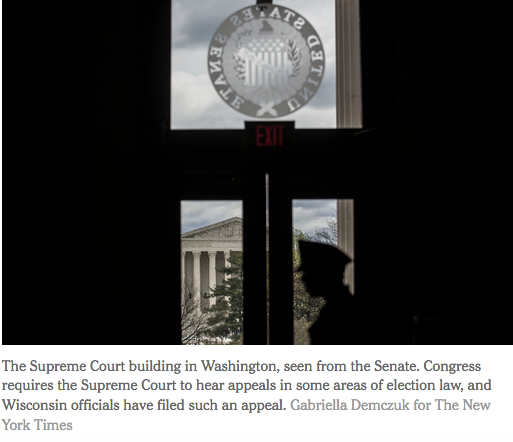The Supreme Court has never struck down an election map on the ground that it was drawn to make sure one political party would win an outsize number of seats. But it has left open the possibility that some kinds of political gamesmanship in redistricting may be too extreme.
The problem, Justice Anthony M. Kennedy wrote in a 2004 concurrence, is that no one has come up with “a workable standard” to decide when the political gerrymandering has crossed a constitutional line.
. . .
The case started when Republicans gained complete control of Wisconsin’s government in 2010 for the first time in more than 40 years. It was a redistricting year, and lawmakers promptly drew a map for the State Assembly that helped Republicans convert very close statewide vote totals into lopsided legislative majorities.
In 2012, Republicans won 48.6 percent of the statewide vote for Assembly candidates but captured 60 of the Assembly’s 99 seats. In 2014, 52 percent of the vote yielded 63 seats.
Last year, a divided three-judge Federal District Court panel ruled that Republicans had gone too far. The map, Judge Kenneth F. Ripple wrote for the majority, “was designed to make it more difficult for Democrats, compared to Republicans, to translate their votes into seats.”
The decision was the first from a federal court in more than 30 years to reject a voting map as partisan gerrymandering.




